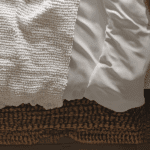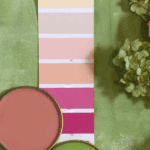Accessorising & styling your home without clutter
Accessories are the finishing touch that can transform a house into a home. They bring warmth, character, and personality to a space, but there’s a fine line between styling and clutter. Done right, accessories enhance your interiors, making them feel cohesive and inviting. Done wrong, they can overwhelm, distract, or make a room feel untidy.
In this post, I’ll share how to get the balance right and show you that accessorising and styling your home without clutter is about being intentional, not minimal.
Why accessories matter
Accessories might seem like the final flourish, but they play a big role in how a space feels and functions. They’re a reflection of you; the books on your shelves, the art on your walls, the cushions on your sofa. Accessories help tell your story while tying your design scheme together.
They also provide flexibility. Unlike furniture or flooring, accessories can be easily swapped or rotated, making them a cost-effective way to refresh your interiors with the seasons.
Less is more
When it comes to accessorising, restraint is key. Quality over quantity always wins. A few carefully chosen pieces will make more impact than lots of small, mismatched items.
Try grouping accessories in threes or fives, odd numbers tend to feel more balanced and natural. And don’t forget the importance of negative space. Leaving surfaces with a little breathing room creates a sense of calm.
Cohesion and placement
The most successful interiors are cohesive, not chaotic. Accessories are a great way to echo your colour palette and pull the scheme together. If your curtains have a hint of blue, you might repeat that in a vase or throw.
Mixing textures is another powerful way to add depth. Think glass with ceramics, metal with fabric, wood with stone. And when placing accessories, balance matters, vary the heights and shapes to keep displays interesting but intentional.
Avoiding clutter
Accessorising and styling your home without clutter doesn’t mean stripping a room bare. It means making thoughtful choices:
- Give each piece a purpose. A lamp, for example, should be both practical and decorative
- Rotate accessories seasonally rather than having everything on display at once. You can even rotate them across your rooms
- Use storage. Not every keepsake or ornament has to live permanently on a shelf or table.
This approach keeps your home feeling curated rather than crowded.
My top tips for styling accessories
- Create a statement vignette on a coffee table, sideboard, or console
- Layer cushions and throws so colours and textures work together, not against each other
- Use mirrors or artwork as accessories, they double up by enhancing light and perspective
- Add greenery. Plants or flowers instantly breathe life into a space.
Final Thoughts
Accessories are where your home really comes alive. They shouldn’t feel like an afterthought, but nor should they dominate the room. By focusing on balance, cohesion, and intentional styling, you can master accessorising without clutter and create spaces that feel calm, finished, and truly yours.
But if you are still not sure or just need a bit of guidance I can help you out! Get in touch and lets discuss which of your accessories goes where this season!
This blog is part of my “Back to Basics with Interior Design” series, where I’ll share tips to help you create spaces that are functional, stylish, and personal. See previous posts and stay tuned for the next post: Sustainable Design Choices: Beautiful and Eco-Friendly


